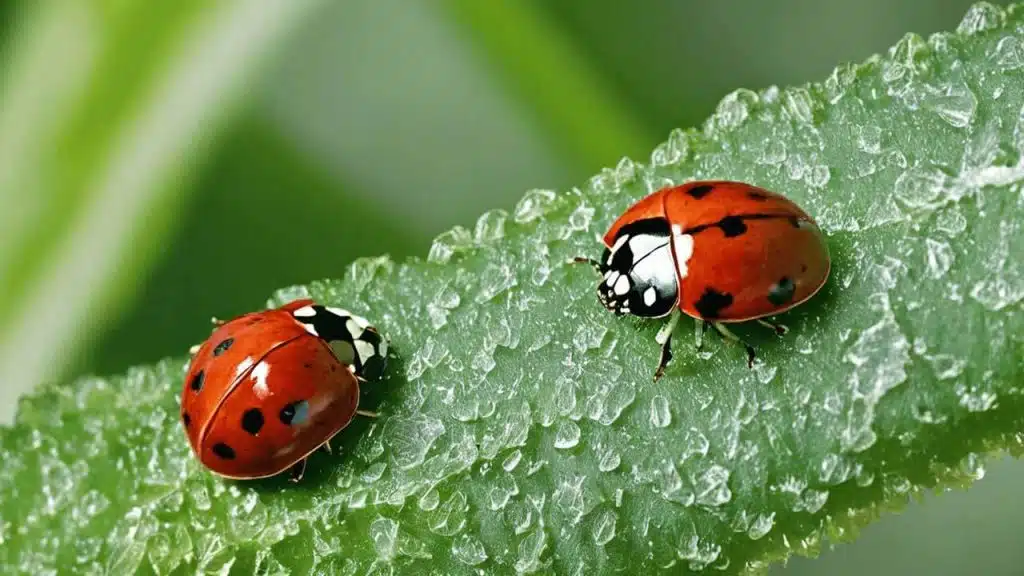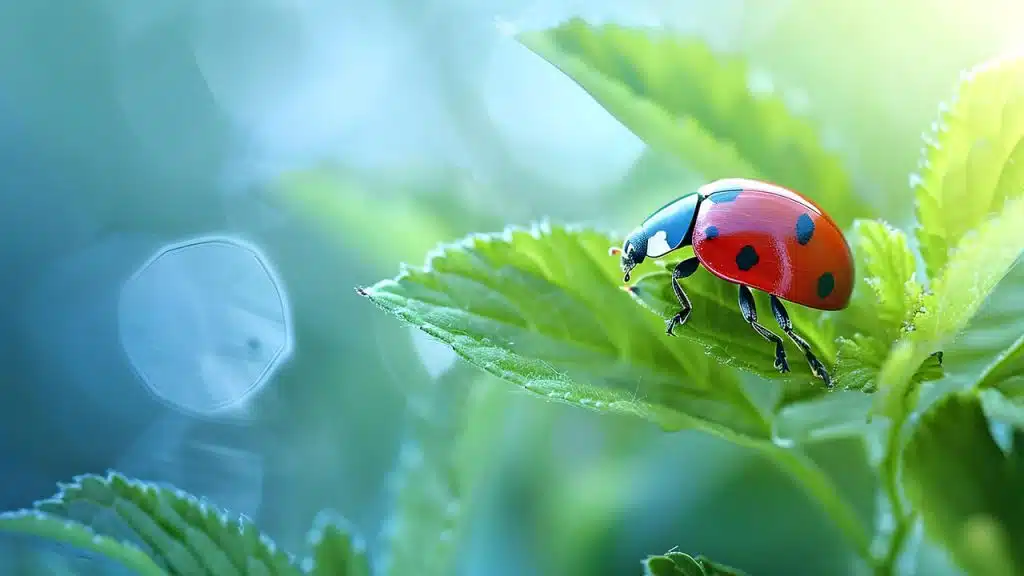


Yes, ladybugs eat spider mites. They are natural predators of these pests.

Gardeners often look for eco-friendly ways to handle problems. And ladybugs are heroes in this area. These insects are not just cute. They play an important role in controlling spider mites. Spider mites, which harm plants by feeding saps, are no match for ladybugs.
With big appetite a ladybug can eat dozens of spider mite each day. This makes them very helpful in keeping plants healthy. Organic farming practice benefits a lot more having ladybug as natural way to control pest. Because of their helpfulness many garden centers and online store sell ladybugs.
Ladybugs or ladybirds are small, colourful beetles that play a big role in nature. These charming insects are more than a pretty sight in your garden. They are essential for maintaining a healthy and balanced ecosystem. Ladybugs help to keep your garden and crop healthy by feeding on pests. Their presence in the environment is a natural form of pest control. They reduce the need for chemical pesticides and promote a healthy environment by preying on harmful insects. Ladybugs help to protect a wide variety of plants, contributing to biodiversity.
Ladybug is a voracious predator. Their diet primarily consists of aphids, scale insects and spider mites. Their appetite for harmful insects makes them valuable allies in gardening and agriculture. A single ladybug can eat up to 50 spider mites in a day. During their larva stage, they eat more than they eat in days. Ladybugs also eat other small insects and mites that can damage plants. By feeding on a variety of pests, ladybugs help to maintain balance in the natural ecosystem.
Spider mites are tiny insects that can cause big problems for plants. They are known for their ability to infest and damage plants. They suck sap from leaves which weaken a plant and make them vulnerable to diseases. Spider mites live in hot and dry places. They also reproduce quickly. The signs of spider mites are yellow leaves, webbing, and plants not growing. Understanding these pests is key to managing them effectively and protecting plants.
Using ladybugs as biological control agents is an effective and environmentally friendly way to manage pests. Chemical pesticides can harm beneficial insects and the environment. But ladybugs target specific pests without causing damage to the environment. Releasing ladybugs in gardens, greenhouses, and agricultural fields helps you to reduce the pest population. This method not only protects the plant but also supports sustainable farming practices. By using ladybugs in pest management programs, farmers and gardeners can reduce using chemical pesticides, promoting a healthy and more balanced ecosystem.
The interaction between ladybugs and spider mites is a classic example of predators and prey. Ladybugs hunt and eat spider mites to keep their population under control. This interaction is crucial for controlling spider mites as they can reproduce quickly and can resist many pesticides. Ladybugs, especially at their larva stage, are very effective in finding and eating spider mites. Understanding this interaction will help the gardener and farmer to use ladybugs more effectively in their pest control method.
Several factors influence ladybugs’ diet. They include the availability of food and environmental conditions and vary by species. Ladybug is an opportunistic feeder. That means they will eat whatever pests are most found. Seasonal changes also affect their food habit because different pest is found in different seasons. Also, different species of ladybugs have a preference for certain types of prey. For example, some species are more effective at controlling aphids. At the same time, others are better at controlling spider mites. By understanding these factors, gardeners can optimize the use of ladybugs in pest management.

To implement ladybugs’ ineffective pest control, it is important to release them in areas where the pest is present. Also, you need to provide a sustainable environment. This includes ensuring there is enough food (spider mites) and shelter. You need to release ladybugs early in the morning or late in the evening when the temperature is cool so that they can stay in the area. By planting a variety of plants, you can create a garden that supports ladybugs year-round. This method of pest control is natural and sustainable. They reduce the need for chemical pesticides.
While ladybugs are a great help in pest control, there are some issues that need to be kept in mind. Ladybug might fly away if conditions are not optimal. Not all species of ladybug are effective for the specific pest you are targeting. Also, maintaining a balance in the garden ecosystem is important. Too many pests cause ladybugs to leave, and too many causes overwhelm them. You need to create a supportive environment with various plants to keep ladybugs in the garden.
If spider mites are still a problem after trying different methods or harming large scale of crops it is best to call professional pest control service. We have expertise and special treatment to effectively get rid of spider mites.
Ladybugs are tiny heroes in the fight against garden pests. By considering their role and how to use them effectively, we can keep our plants healthy in an eco-friendly way. Their presence not only enhances the beauty of the garden but also contributes to a balanced ecosystem. By using ladybugs in pest management, we can reduce the use of chemical pesticides, promote biodiversity and enjoy healthy plants and crops.
Ladybug helps in pest control by feeding on harmful insects like spider mites. A single ladybug can eat up to 50 spider mites a day. Making the effective natural predators that reduce pest population without harming environment.
To control spider mites, you need to plant various flowers and herbs in your garden that attract ladybugs. Avoid using chemical pesticides as they can harm plants and ladybugs. Provide water and shelter, like garden stones or ground cover, for them.
You can purchase ladybug from garden centers or online store. To release them wait until evening or early morning when weather is cool. Release them near infested plants particularly those with spider mites.
While ladybugs primarily feed on spider mites, they also eat pollen and nectar when there is a pest shortage. This diet helps them to survive and reproduce, particularly in times when food is not available.
Not all ladybug species are effective against spider mites. Some species are more effective against specific insects. For instance, the Stethorus Punctillum also known as spider mite destroyer is effective against spider mite. It is very important to choose the right species for your effective pest control.